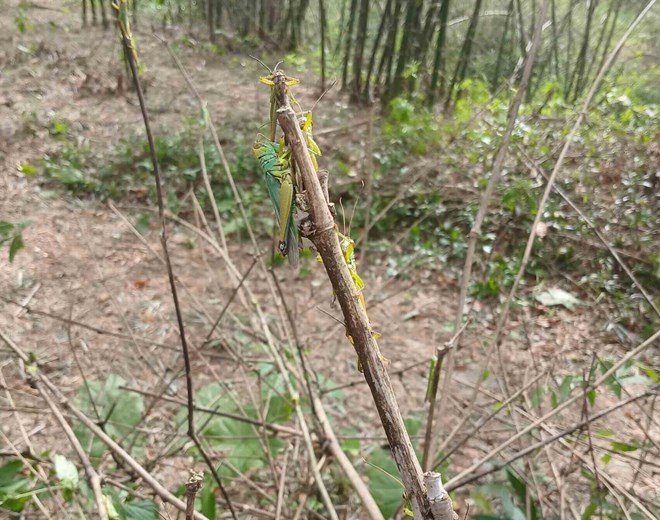On June 17, the People's Committee of Nong Truong Viet Trung town (Bo Trach district, Quang Binh province) said that the authorities had just used drones to destroy the locust.
After the locust attacked the mangrove trees to collect bamboo shoots from the people, it has now spread to more than 10 hectares.
On the same morning, the authorities organized spraying to kill locust in areas far from residential areas. Using drones to spray pesticides in areas far from residential areas helps reduce the risk of pollution for people.
As reported by Lao Dong Newspaper, the locust flock continuously appears in high density, causing serious damage to the mangrove and bamboo tree all year round and being directly attached to the livelihoods of many households. Eating thick leaves causes the plant to lose growth ability, affecting long-term productivity.

In locations near residential areas, people proactively take manual measures such as catching rackets, feeding poultry with loads, collecting soaking to make organic fertilizer or destroying it.
According to Mr. Tran Dinh Hiep - Deputy Director of the Department of Agriculture and Environment - crabs usually lay eggs around September-November every year. Eggs will "winter" in soil until March-May next year to bloom. Therefore, it is very important to proactively prevent deductions from the end of the year. People are advised to dig up the soil in areas suspected of egg covers, collect to destroy or release poultry to eat eggs.

From March to April, it is necessary to increase monitoring to detect young crabs early, promptly catch rackets or spray medicine. The Department of Agriculture and Environment also requested the People's Committee of Bo Trach district to count the damage, update the development of the pests and develop a production support plan if necessary.
Synchronous prevention measures are being urgently deployed to prevent the locust from spreading.










